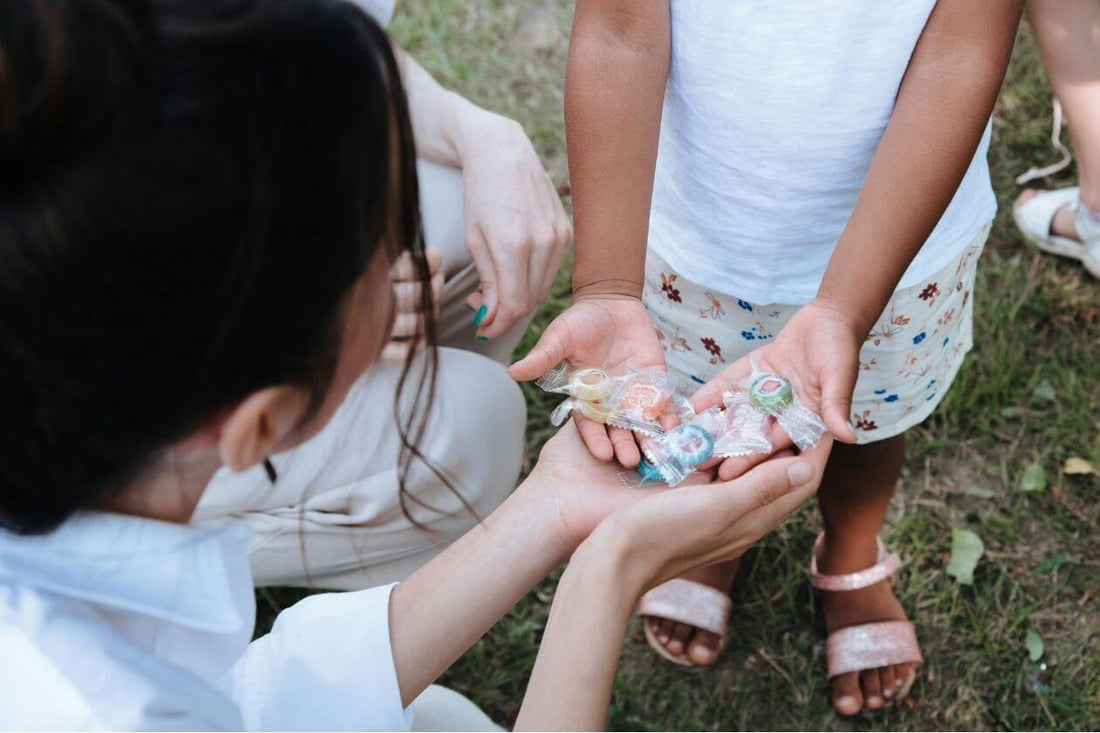
Gluten at School
Share
Gluten at School
Gluten at school is often the main concern for families raising a Celiac child, making September—the return to school—a month of headaches. If they have been attending school for several years, the family has already established guidelines (talking to the homeroom teacher, the cafeteria manager, reminding friends' families, etc.), but if it’s the first year, doubts and nervousness arise.
Always explain the topic calmly, clearly, and concretely, conveying a sense of **normalcy**, so your child perceives it as a normal thing—they just shouldn't eat certain things, but this absolutely shouldn't affect their **social relationships**.
Never exclude your child from activities due to fear of gluten.
To ensure everything goes smoothly, we need to follow a few very simple guidelines:
Medical Documentation and Communication with the Cafeteria
The child must have a **medical report** that you can submit to the school. Therefore, it is crucial not to thoughtlessly remove gluten before a diagnosis and to complete all tests deemed necessary by the pediatrician/gastroenterologist.
Once the school is informed, hold a meeting with the **head chef and the cafeteria manager**. Many families with a recent diagnosis worry that the school won't have a gluten-free option, but since Law 17/2011 on Food Safety and Nutrition, every school is obligated to offer a **gluten-free menu** to students who require it. If a school cannot provide a gluten-free menu, they must ensure that food provided by the family is stored refrigerated and heated properly, always **avoiding the risk of cross-contamination**. By contacting the individuals responsible for the kitchen and dining area, you can learn the protocol to follow and explain it to your child. This will give them security and confidence on the first day they have to eat lunch there.
Communication with the Teacher and Classmates
As soon as the child is assigned a class and a homeroom teacher, contact them, explain the situation, and assess how much they know about Celiac disease, gluten-free food, cross-contamination, etc. If necessary, you can offer your help with information guides and stories to explain it to the other students. Regarding classmates, if they understand that consuming certain things could **"make their classmate sick"** and cause them a "stomach ache," they quickly internalize this and avoid anything that could make their classmate ill. If the children are still small, you can do this through stories, such as "Don Gluten, the rascal" or "Little Red Riding Hood, the Celiac."
Classroom Materials and Hygiene
Another important aspect in the classroom, especially if the child is small, is the **materials**. Many crayons, colored pencils, and **playdough** contain gluten. Celiac children can touch materials that contain gluten, as Celiac disease is not an allergy, but we must always ensure **good hand hygiene** afterward and that no material comes into contact with the child's mouth. It is very important for the child to adopt these hygiene habits both at school and at home. For very young children, it is crucial to explain to them that the material should not be eaten, but if you see that it will be difficult to control in the early years, you can opt for **gluten-free materials**.
Playdough is perhaps the highest-risk material. You can opt for gluten-free playdough, which is safe for Celiac children.
Playground Rules
The same strict guidelines should be followed on the playground as in the dining hall. If the child brings a small lunch with them, it is important not to **exchange food** with their classmates and to accustom them to protecting their food from **cross-contamination**. It is also important not to accept any food unless they are completely certain it is gluten-free.
"By adhering to a few simple guidelines, the return to school can be a joyful, desired, and safe time for the child, which they can share with their peers without compromising their health."



